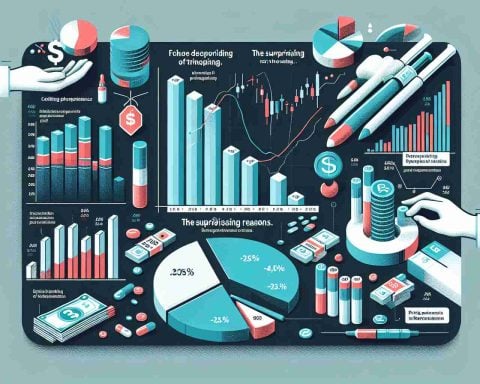- President Trump’s freeze on EV charger funding disrupts the NEVI program aimed at enhancing charging infrastructure.
- Major automakers and EV charging companies are pushing for the administration to reverse the freeze to protect billions in investments.
- The delay in funding affects fuel retailers who have invested in installing EV chargers at stations.
- States like Michigan are halting NEVI fund distributions, leaving EV owners with fewer charging options.
- This policy change raises concerns about the sustainability of the automotive industry’s shift toward electric vehicles.
- Legal action and industry pressure could influence the administration’s decision regarding EV infrastructure funding.
In a sudden twist, President Trump’s recent freeze on funding for electric vehicle (EV) chargers has left businesses reeling. Initially perceived as a boon for economic growth, his decision now threatens the very backbone of the nation’s EV infrastructure. The National Electric Vehicle Infrastructure (NEVI) program, backed by the Inflation Reduction Act of 2022, aimed to revolutionize America’s charging capabilities, but its momentum has now stalled.
Automakers and EV charging companies, including big names like General Motors and Toyota, are urgently calling on the administration to lift the freeze. They argue that this pause endangers billions of dollars in investments, stymying progress toward a seamless EV travel experience. Fuel retailers, too, are caught in this unexpected crossfire. Many have already poured resources into installing EV chargers at gas stations—strategically positioned to boost convenience for drivers.
As states like Michigan halt NEVI disbursements, frustrated EV owners are left in limbo, craving more charging options to support their green vehicles. This sudden policy shift not only brings investment uncertainty but also jeopardizes the automotive industry’s momentum in creating a sustainable future.
With legal challenges on the horizon and pressure mounting from several industries, the fate of America’s EV infrastructure hangs in the balance. Will the administration reconsider its course? The stakes couldn’t be higher, and the clock is ticking for a country poised on the edge of an EV revolution. Stay tuned as this story unfolds!
EV Infrastructure Crisis: How Trump’s Funding Freeze Impacts the Future of Electric Vehicles
The recent decision by President Trump to freeze funding for electric vehicle (EV) chargers has sent shockwaves through the EV infrastructure landscape. As stakeholders grapple with the implications, it’s crucial to explore the broader context and and new relevant information regarding this developing situation.
Market Forecast
The EV market has been projected to grow significantly, with the International Energy Agency predicting that global EV sales could reach 25 million units annually by 2030. However, with funding for charging infrastructure now stalled, analysts warn that these forecasts may need to be revised downward, potentially impacting the overall growth of the sector.
Pros and Cons of the Funding Freeze
Pros:
1. Potential for Budget Reevaluation: The administration may allocate funds to projects perceived as more urgent or impactful.
2. Increased Market Competition: Without government intervention, innovation from private sector companies may accelerate.
Cons:
1. Stalled Infrastructure Development: Without funding, the rollout of essential charging stations will be delayed, while EV adoption will suffer.
2. Investment Uncertainty: Automakers and investors are likely to pull back on EV-related spending, which could lead to lost jobs and technological stagnation.
Innovations and Trends in EV Charging
The freeze comes at a time when the EV industry is experiencing rapid technological advancements. Innovations like ultra-fast charging stations and wireless charging technologies are gaining traction. Major companies are investing in these technologies to enhance convenience and speed for consumers.
Use Cases and Limitations
EV charging stations serve various use cases, including public charging networks, workplace charging, and home charging solutions. However, there are significant limitations, particularly in rural areas where charging options are scarce, and range anxiety continues to be a major concern for potential EV buyers.
Key Questions
1. What are the potential consequences of the EV funding freeze on the automotive industry?
The automotive industry may face stagnation in EV adoption rates, as inadequate charging infrastructure could deter potential buyers. This could also lead to financial losses for companies heavily invested in EV technologies.
2. How can the administration support EV infrastructure without federal funding?
The administration could encourage private sector investments through tax incentives, grants, or partnerships with energy companies for the development of charging infrastructure.
3. What legal challenges might arise from this freeze on funding?
Various stakeholders, including state governments and EV companies, may initiate legal action to contest the freeze, asserting that it violates commitments made under the NEVI program and goes against federal laws promoting green energy initiatives.
For more information on electric vehicles and policies affecting them, you can visit Energy.gov.













